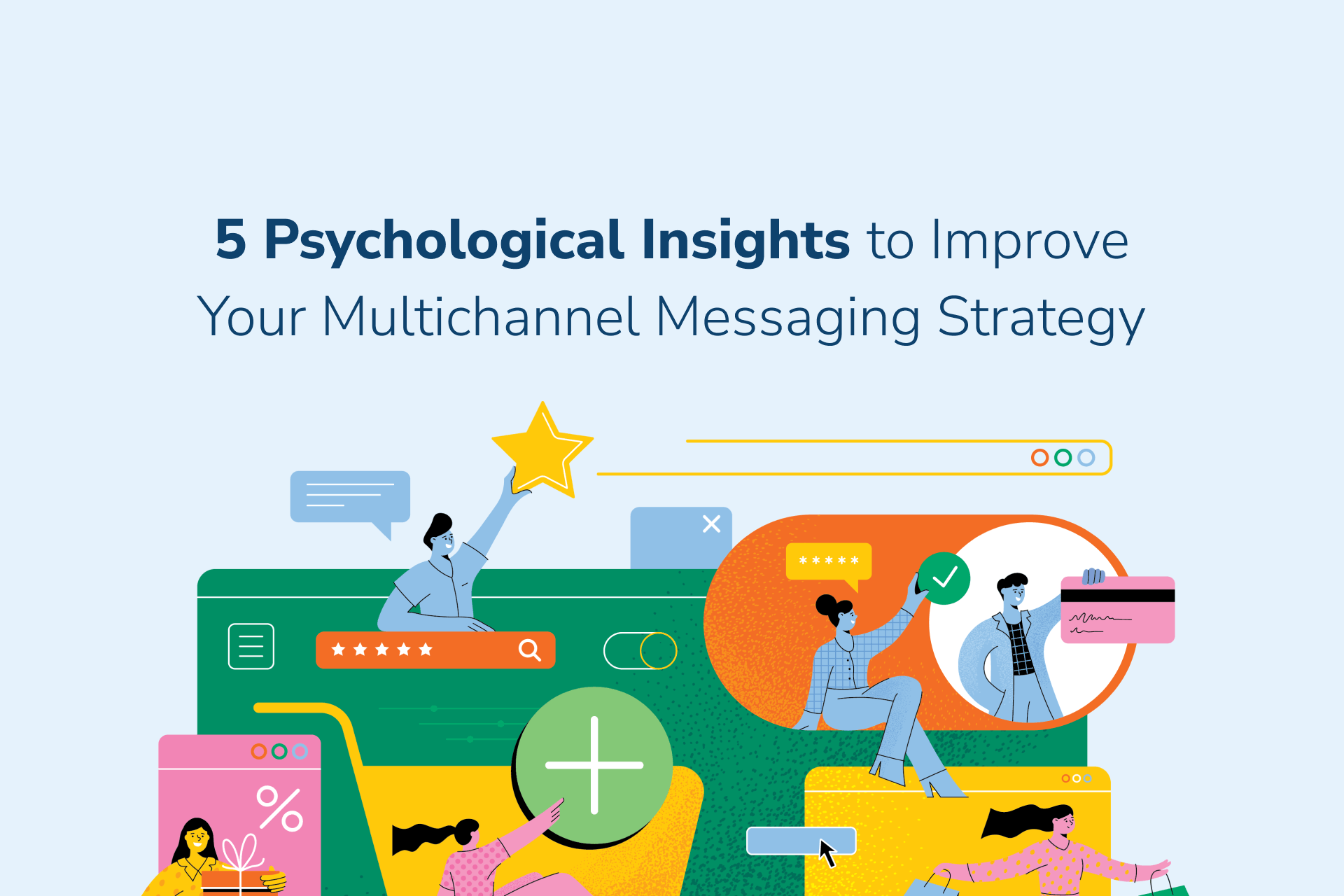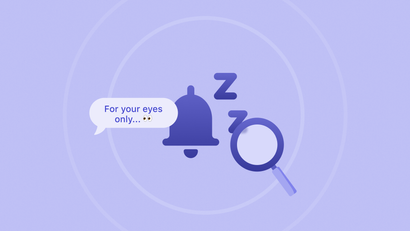Although data and analytics can surely help guide your messaging campaigns, understanding what drives them at a subconscious level can be powerful. Modern consumers live in an increasingly oversaturated digital world. In an environment where your app or site is swimming in competition for users’ attention and engagement, using principles of persuasion and psychology can make your content stand out.
Humans are constantly using heuristics, or mental shortcuts, to understand the stimuli in their environment and to make decisions— including decisions around your product or service.
Insights from psychology, neuroeconomics, and neuroscience can help inform your messaging strategy. This article will discuss some guiding principles and how best to apply them.
What is Influence?
In psychology, influence refers to the impact that something or someone has on an individual's preferences or actions. Influences can come from within an individual, or from messages or groups outside of them.
With that in mind, let’s get into how you can create the greatest influence in your messaging strategy.
1. Emphasizing Scarcity
The less of something there is, the more consumers want it! Scarcity is a fundamental principle of influence in Robert Cialdini’s famous work The Power of Influence and is used by marketers and advertisers everywhere. Scarcity is a powerful motivator of human behavior, studies show. Just think back to the early stages of the COVID-19 pandemic, when, in an environment of extreme fear and limited executive function, swarms of people exhibited collective hoarding behavior around goods like toilet paper. This bandwagon behavior was spurred in part by an environment of high demand and limited supply, which are key elements of the scarcity principle.
Creating a sense of scarcity in your messaging campaigns can motivate your audience to take action more quickly. For example, you can craft messages that convey that a product they’ve browsed is almost out of stock, that a user only has X days left to take advantage of your promo, or that a user’s competitors in your mobile game are snatching up the magic eggs and they’d better hurry back to your app. Framing your company’s offering as something limited is a surefire way to incentivize action.
If you want to be even more effective in your scarcity messaging, you should also consider the difference between a “gain frame,” which emphasizes the net benefits of the offer and a “loss frame,” which emphasizes the consequences of not acting on the offer. Neuromarketing shows that consumers with a low need for uniqueness and a high need for conformity respond better to a gain frame, while users with a high need for uniqueness respond better to the loss frame. You may want to play around with segmentation and testing to see how different users respond to different wordings of your message.
2. Giving Before you Take
The principle of giving first, or what Cialdini labels as “reciprocity,” is the idea that when we receive a gift or someone does us a favor, we are subconsciously motivated to give back in return. In his years of research, Cialdini found that when restaurant customers received small gifts from their waiters during or after a meal, such as a mint or fortune cookie with the bill, they gave significantly larger tips.
You can use this principle in your messaging to deliver your customers in-app deals or rewards or educate your users delivering upfront value with free resources. This principle is especially important in users’ early touchpoints with your brand. For example, you can give your customers coupons, free offerings, and more using the different channels at your disposal, and they will subconsciously be more reciprocal with your brand. Even the most basic transactional messages, like flight and order updates, can build a sense of reciprocity with the user and keep them in good graces with your brand. If you’re a food-tracking app, for example, you could send daily morning push notification reminding users to eat a balanced breakfast, take their medication, or drink a cup of water. By receiving first, they are more likely to give later on.
3. Using Social Proof
As a marketer, you’ve most likely used this heuristic before. Social proof is another one of Cialdini’s principles of persuasion and is used widely across industries. This heuristic is the idea that we look to others in understanding how to behave when we are uncertain. When customers are unfamiliar with your space, it’s helpful to present them with reassurance that other people are enjoying and benefiting from your product or service. This is why customers look at reviews and why they react favorably to testimonials on your website.
With customer messaging, you can use social proof in many creative ways. You can include customer testimonials, case study links, or reviews and ratings in your cross-channel messaging to instill trust in your brand. You can also work on gaining social proof through your messaging strategy to feature elsewhere by collecting reviews through in-app message surveys or by using messaging to drive traffic to an online reviews page.
4. Hooks
Hooks, or habit loops around a product or service, are behind every successful app’s retention strategy. Focusing on how your messages can promote habit formation around your product could make or break how successfully you reengage your users.
Nir Eyal explores the reasons behind why successful companies are able to draw consumers back to their product or service time and time again.
In his bestselling book “Hooked: How to Build Habit-Forming Products” Eyal explores the reasons consumers build habits around products. If you want to draw consumers back to your product or service time and time again, you’ll want to design your messages to encourage users to pass through what Eyal terms the psychological “hook” that’s necessary to form a habit with your brand. This is the behavioral pathway that brings users back to your product’s experience and consists of four steps —trigger, action, reward, and investment. Developers and marketers alike need to design their mobile apps knowing what triggers users to open their app or otherwise reengage with their product. Internal triggers are powerful motivators. Most often, they are negative emotions, or negative valence states, that users are trying to alleviate, such as boredom, loneliness, or uncertainty. For example, gaming apps often capitalize on the internal trigger of boredom.
Eyal says successful companies identify and capitalize on a trigger that occurs at least once weekly. Luckily, your messaging can draw attention to consumers’ existing internal triggers to prompt re-engagement. Your messages make a brand’s hook more seamless and consequently, more habit-forming.
Your news app may address the internal itch of uncertainty, for example. You can identify that your users satisfy this internal state of not knowing by clicking back into your app to read a series of today’s news stories. Play on this fundamental “itch” in your push notifications to bring users back. Send a push along the lines of “Don’t miss out on today’s latest stories,” or “Stay on top of the election results in real-time."
5. Word Choice
Across channels, especially short-form channels like SMS and push, word choice can be vital to users’ perception of your message. Research shows there are certain words that automatically make your copy more persuasive. Word choice and framing are everything. In a 1970’s study, social psychologist Ellen Langer ran a test to see which of the three following statements were more likely to convince a long line of students waiting to use a Xerox machine to let a researcher cut the line:
- “Excuse me, I have 5 pages. May I use the xerox machine?”
- “Excuse me, I have 5 pages. May I use the xerox machine, because I have to make copies?”
- “Excuse me, I have 5 pages. May I use the xerox machine, because I’m in a rush?”
The results were shocking. The first variant yielded 60 percent compliance, the second variant 93 percent compliance, and the third variant 94 percent compliance. Through this experiment, the researchers found the word “because” triggers an automatic tendency toward compliance.
The other topmost persuasive words in the English language are “you,” “free,” “instantly,” and “new.”
As you can see, a single word can make all the difference in your copy, so make sure you pick the most persuasive ones.
Easily Manage Your Messaging Across Every Touchpoint
OneSignal is designed to help you send notifications and seamlessly manage your user communication across every channel, including mobile push notifications, web push notifications, bulk SMS, in-app messaging, and email. Our platform is quick to set up and makes it easy to customize and automate your messaging strategy without doing any development work. With our A/B testing feature, it's easy to try out different content and message elements to find out what resonates with your audience. If you don't have a OneSignal account, you can create one for free and start sending push notifications to your users today. Don't take our word for it — simply sign up and see for yourself!




